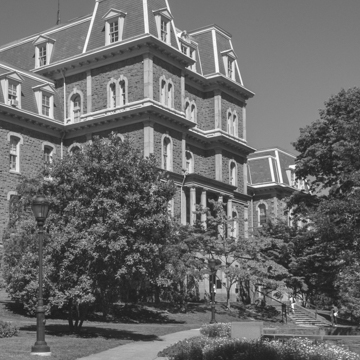Professor Ario Pardee raised funds to build a Victorian Gothic structure to house his science department, but less than a decade after its completion the building burned. It was rebuilt in its original form in 1879, a Second Empire design in limestone, sandstone, and granite. Three floors and an attic in height, it terminates in a mansard roof punctuated with pedimented dormers and, in good Second Empire fashion, it ends in two defined pavilions while the center section rises to a heavily bracketed mansard. Pardee Hall burned again in 1897, losing its interiors although its stone walls survived. The fire was deliberately set by a professor angry that his contract was not to be renewed—his field: ethics and moral philosophy.
You are here
Pardee Hall
If SAH Archipedia has been useful to you, please consider supporting it.
SAH Archipedia tells the story of the United States through its buildings, landscapes, and cities. This freely available resource empowers the public with authoritative knowledge that deepens their understanding and appreciation of the built environment. But the Society of Architectural Historians, which created SAH Archipedia with University of Virginia Press, needs your support to maintain the high-caliber research, writing, photography, cartography, editing, design, and programming that make SAH Archipedia a trusted online resource available to all who value the history of place, heritage tourism, and learning.


